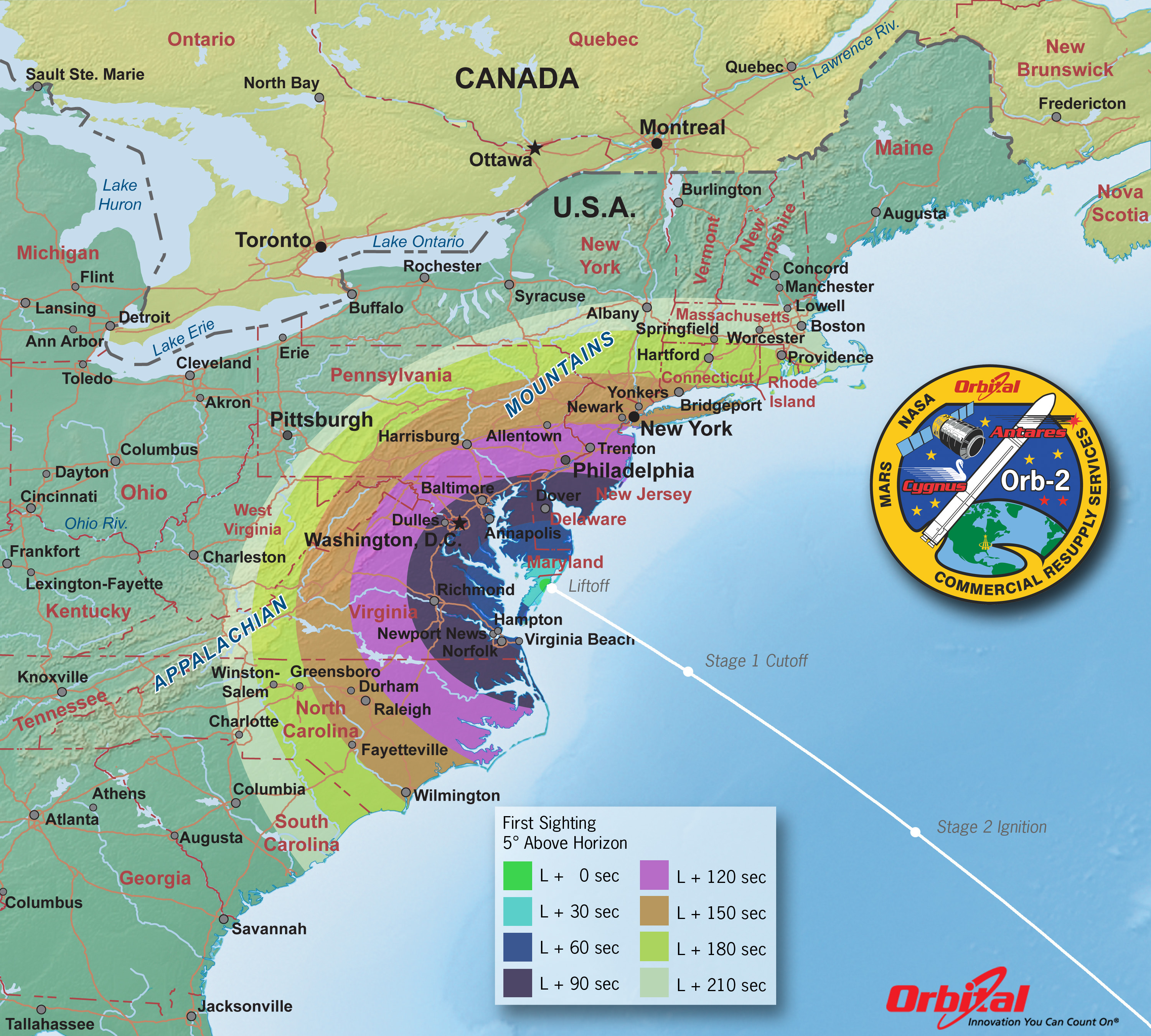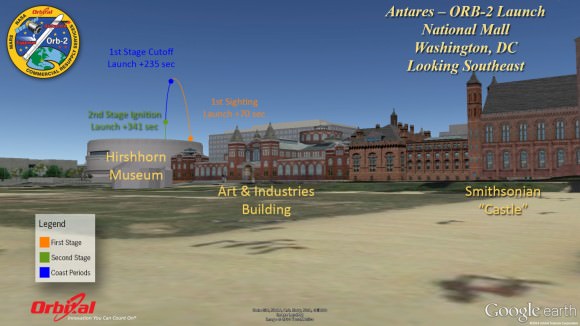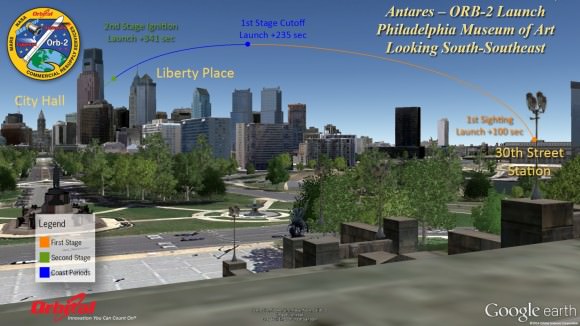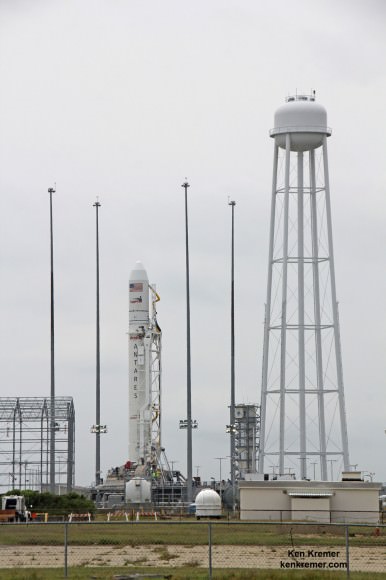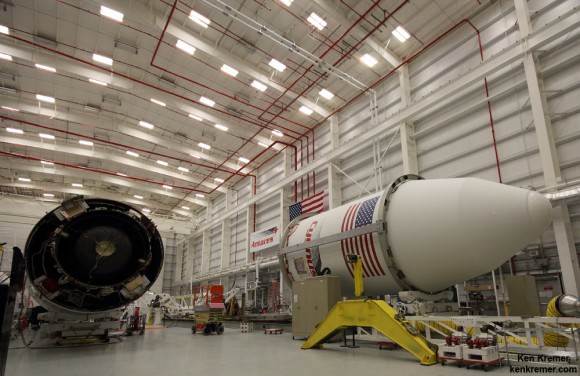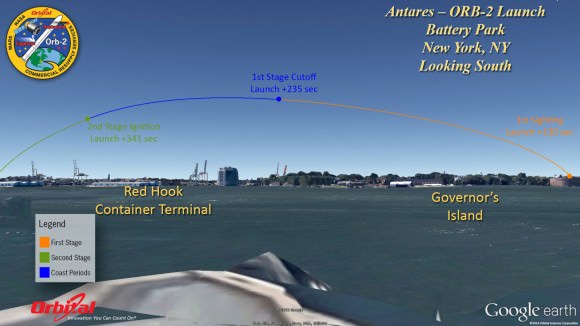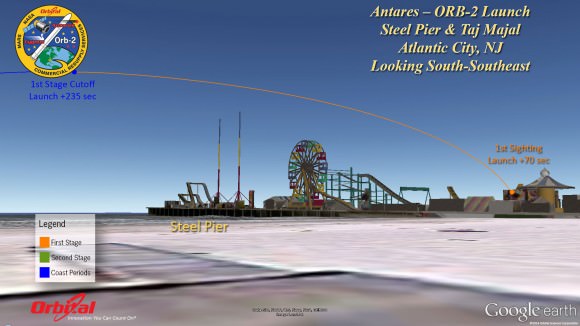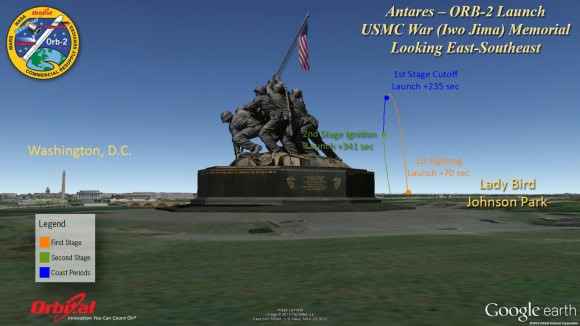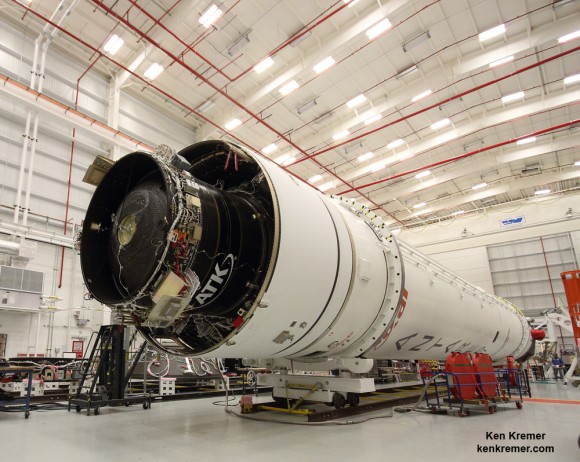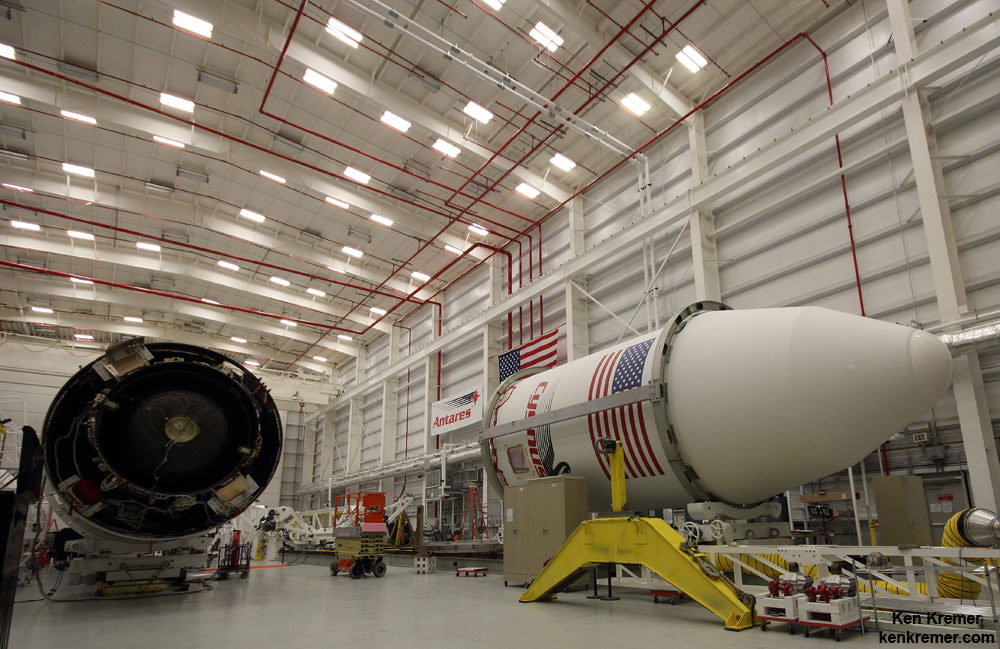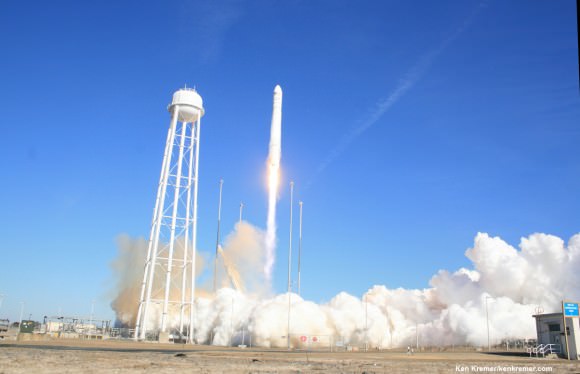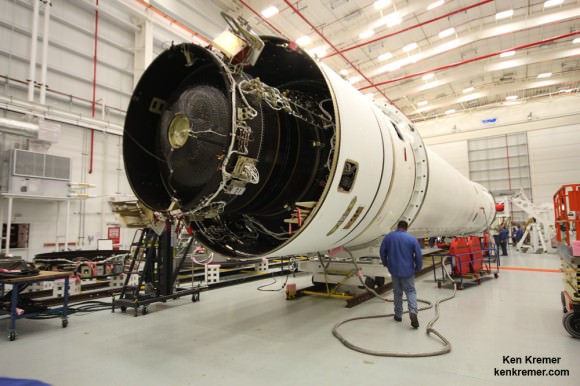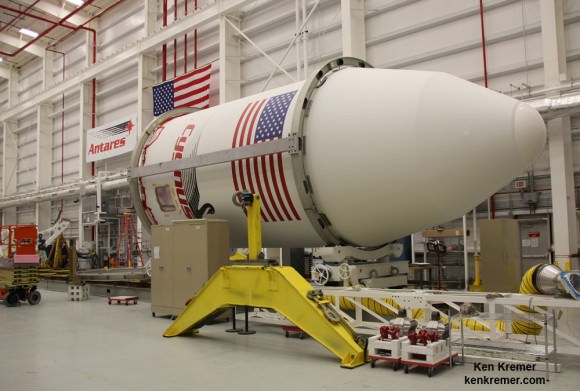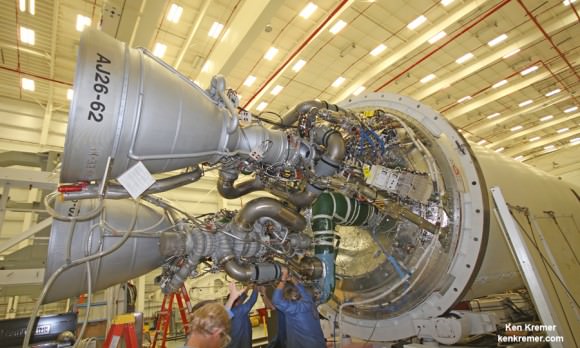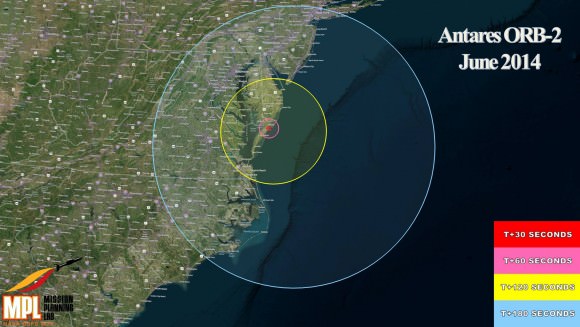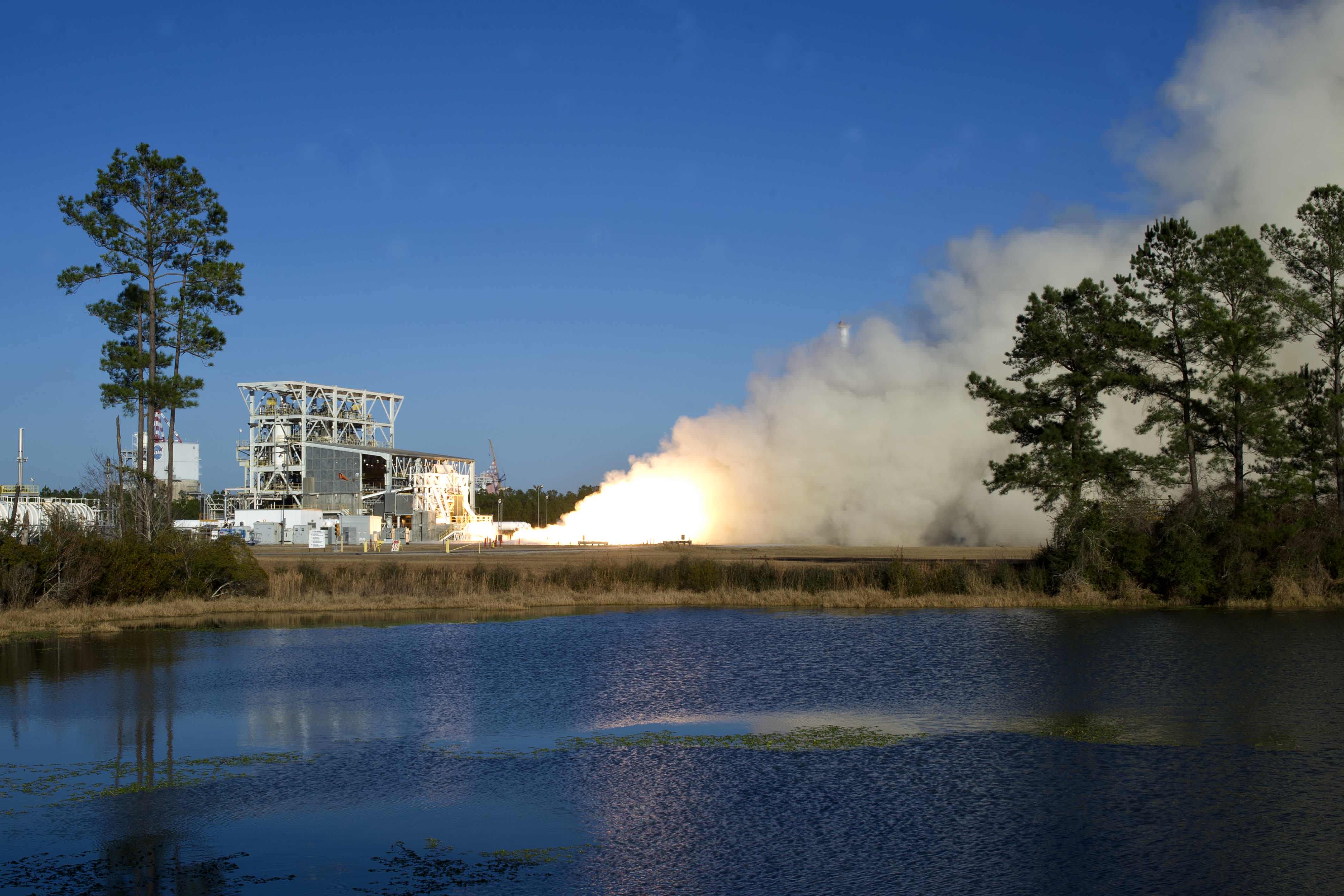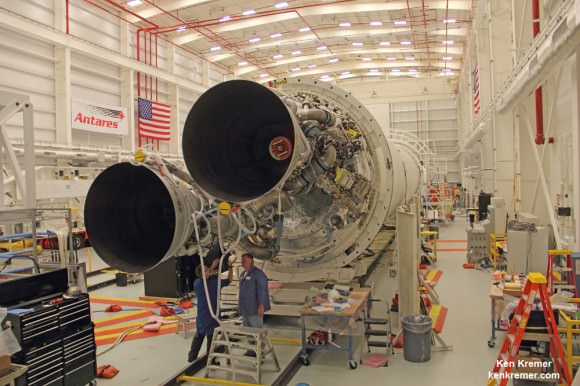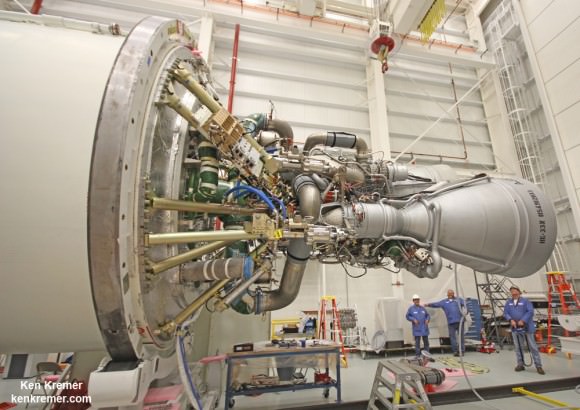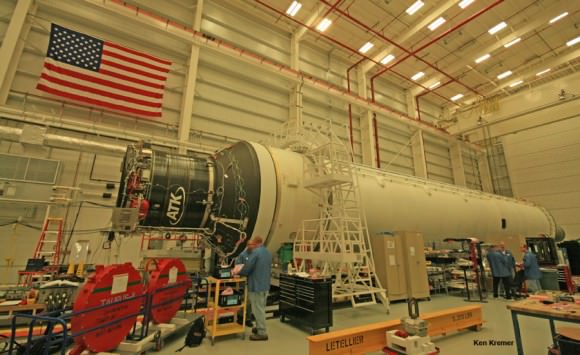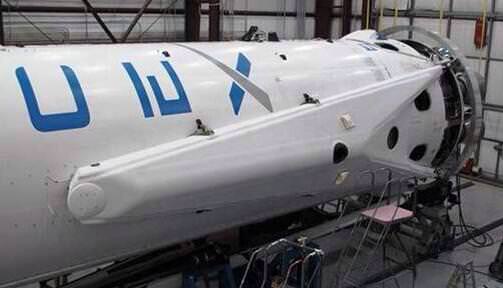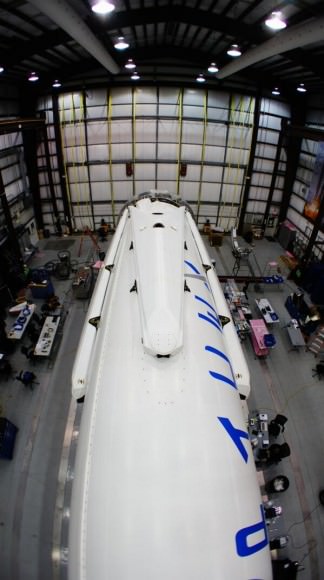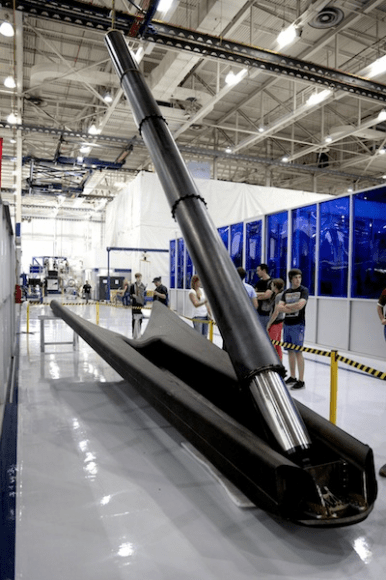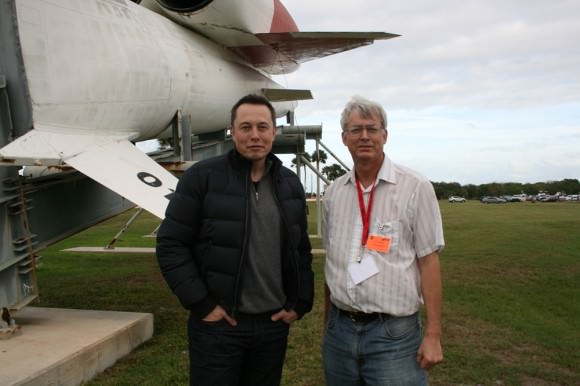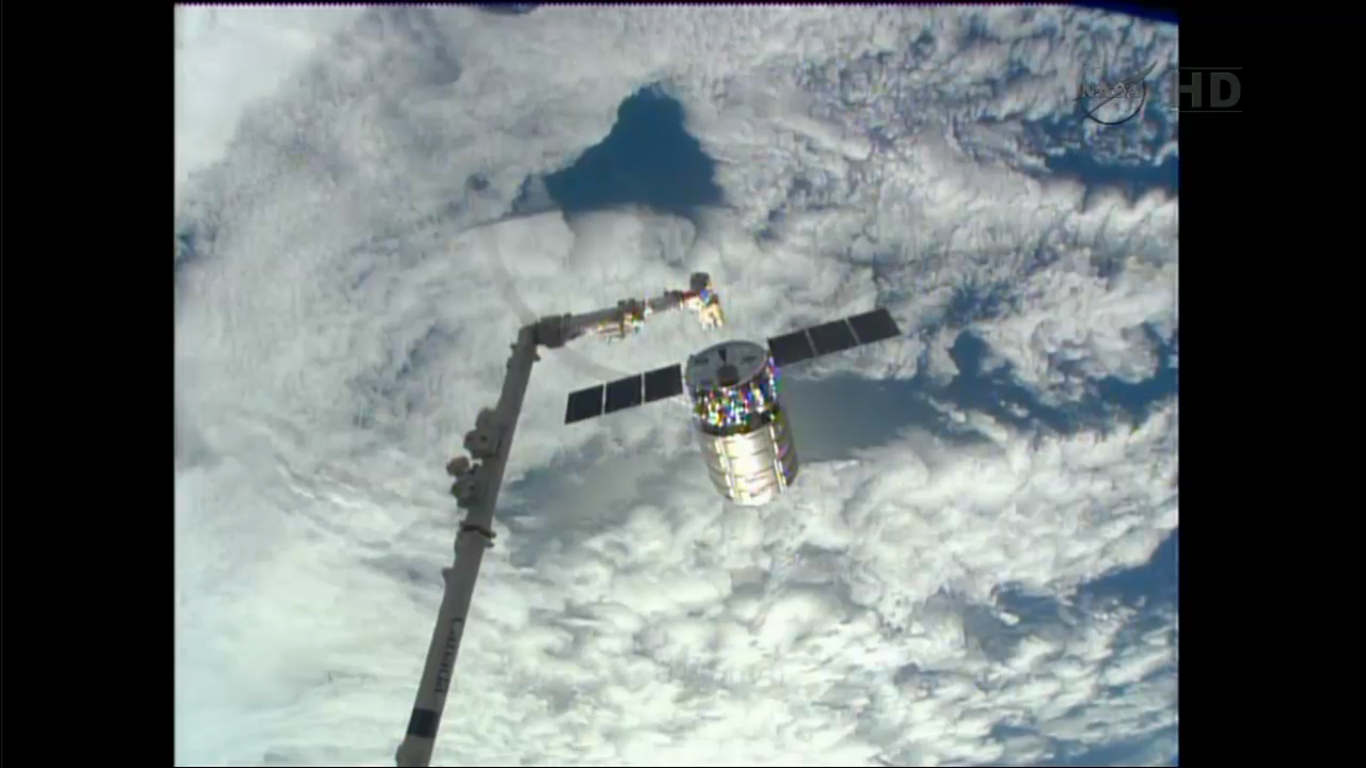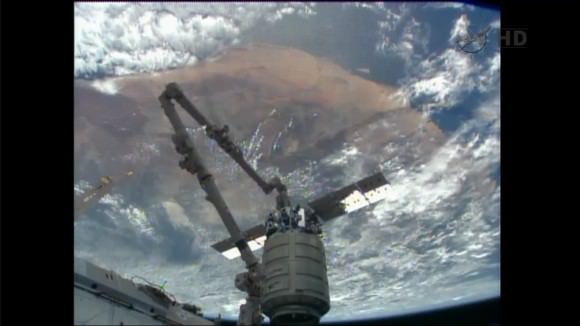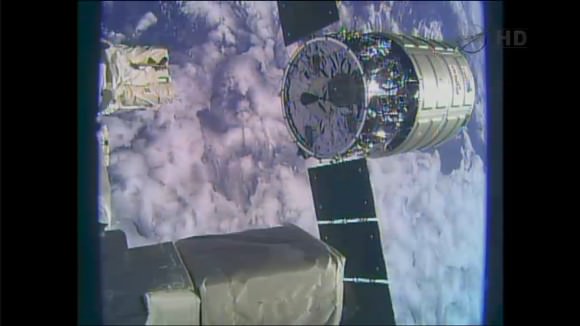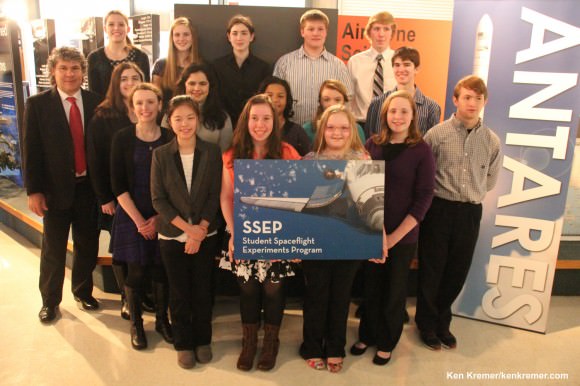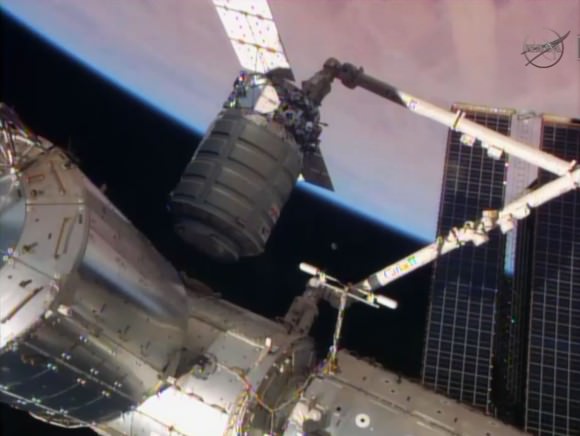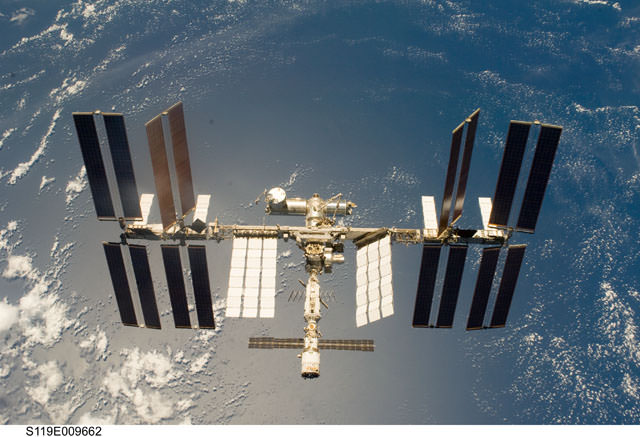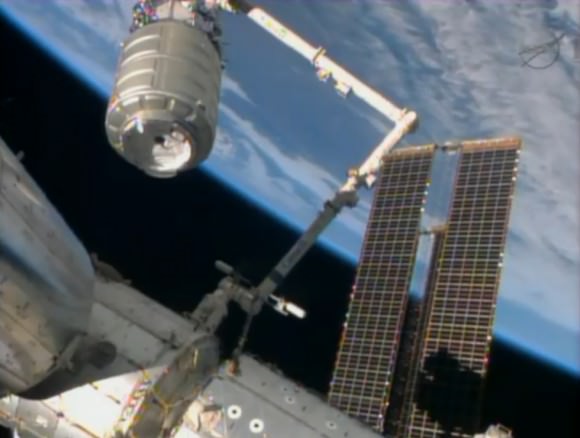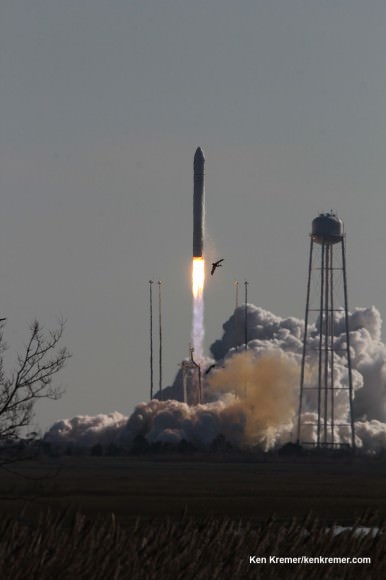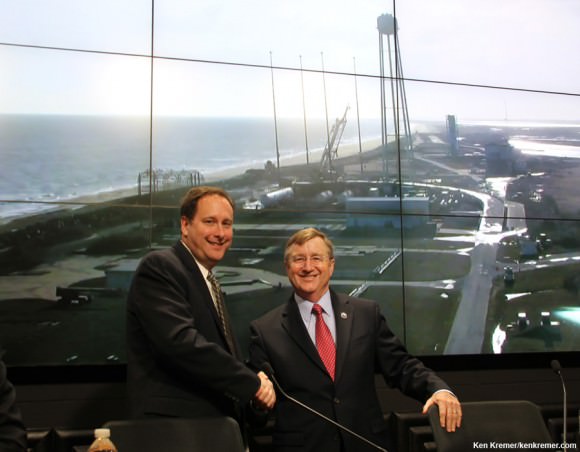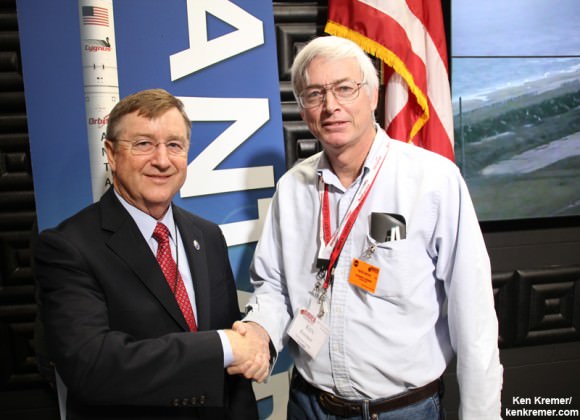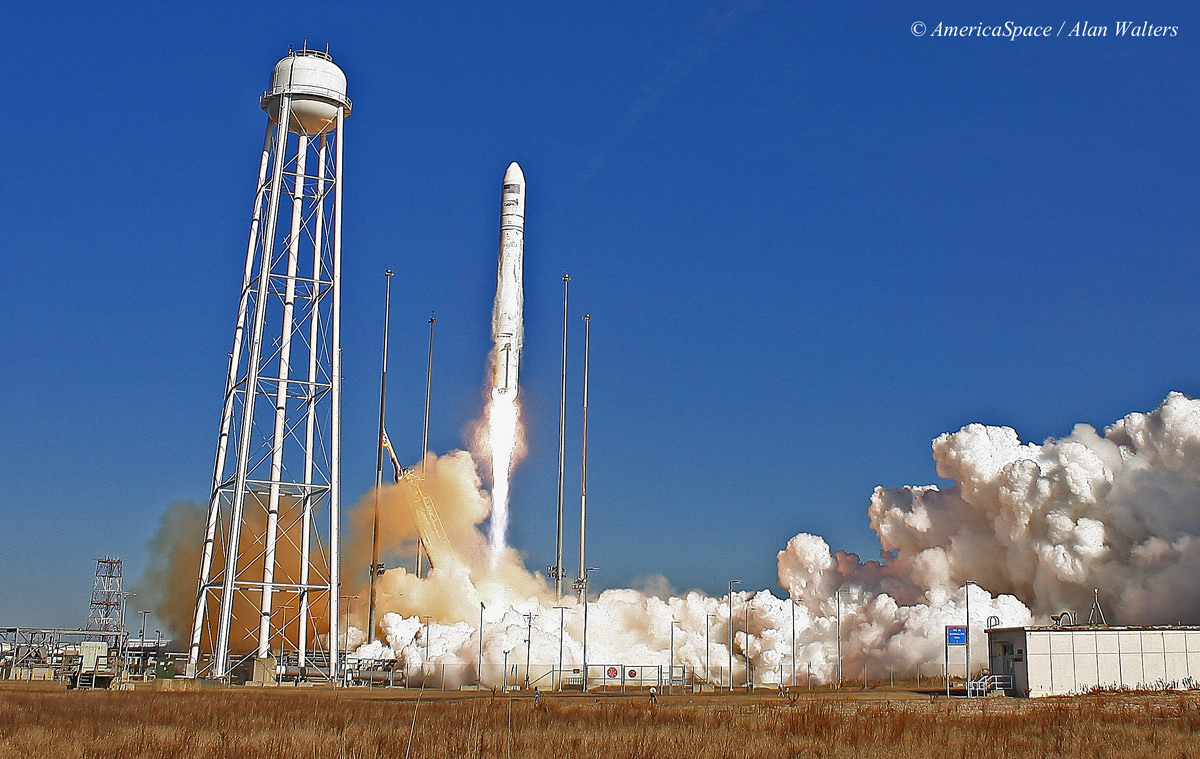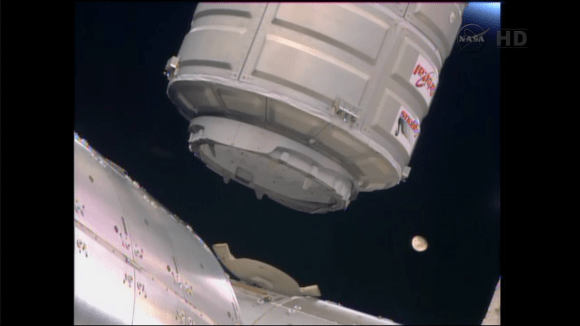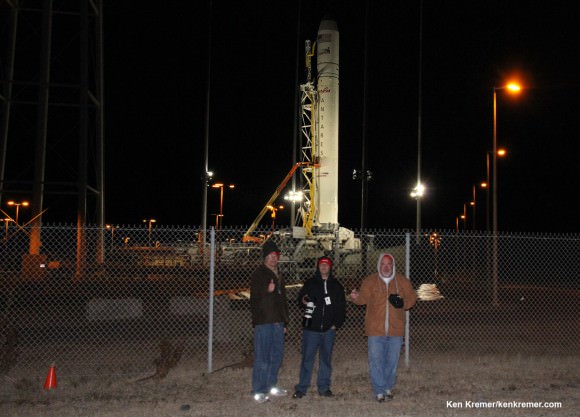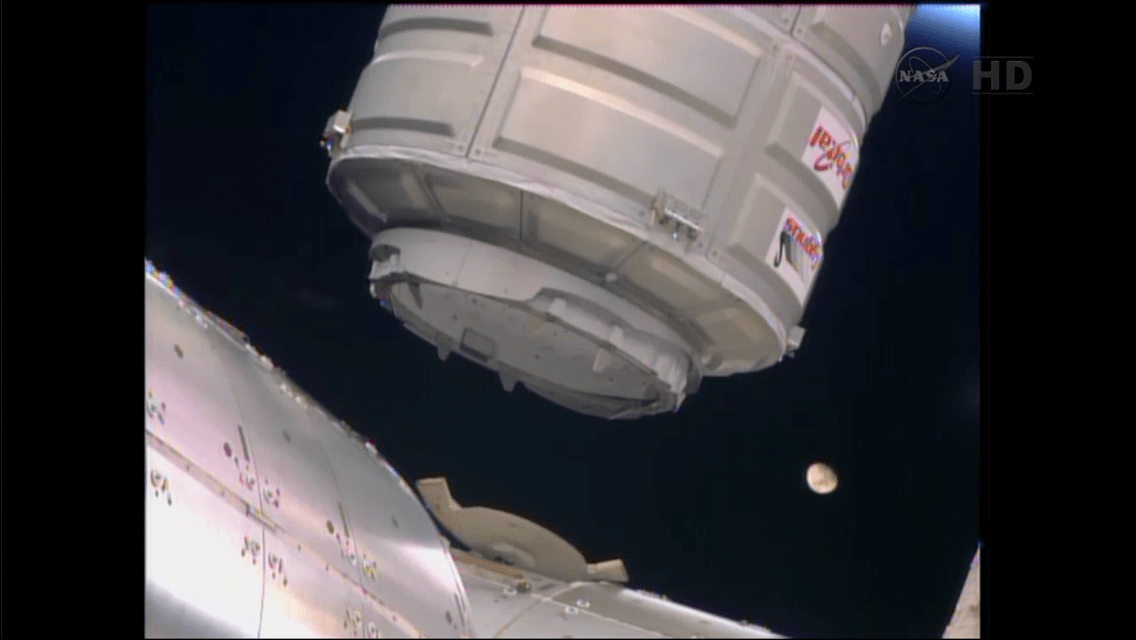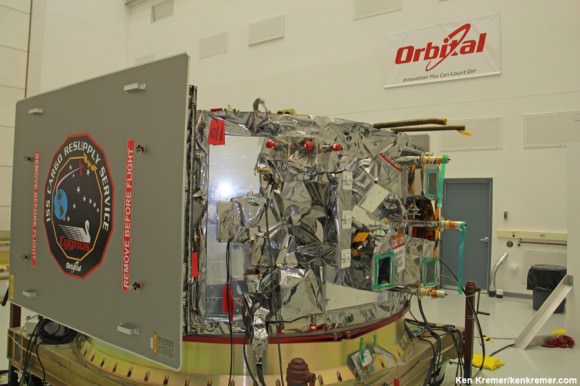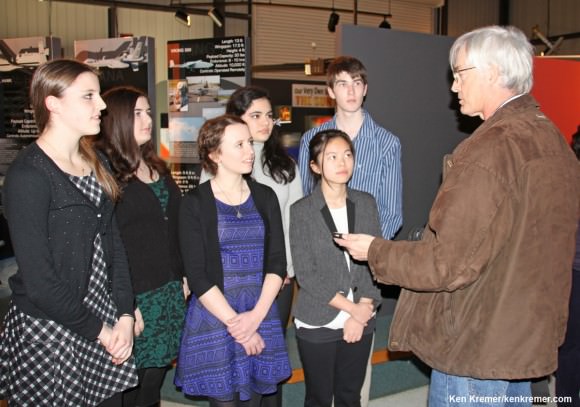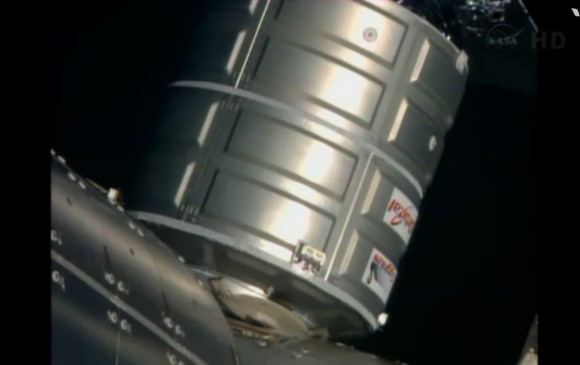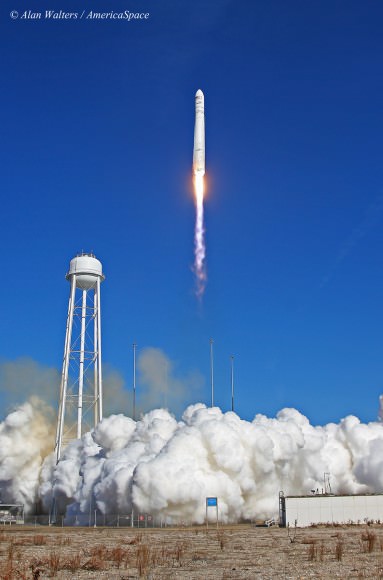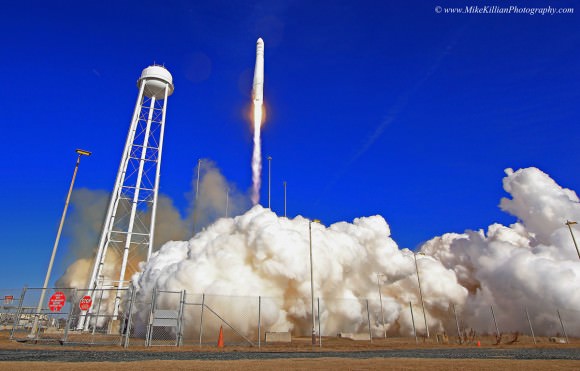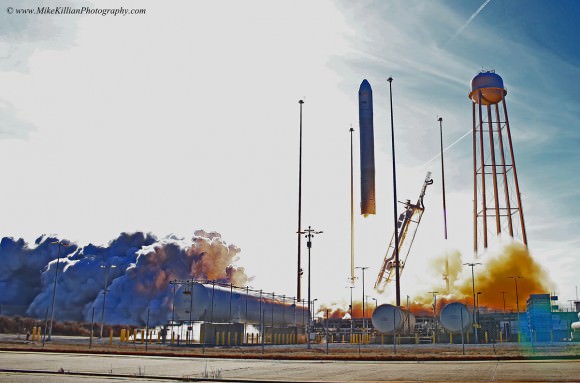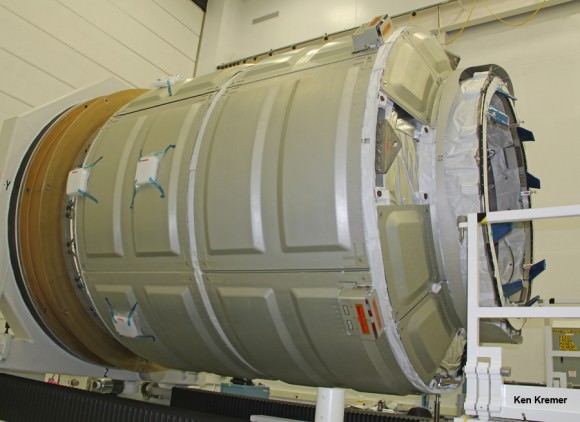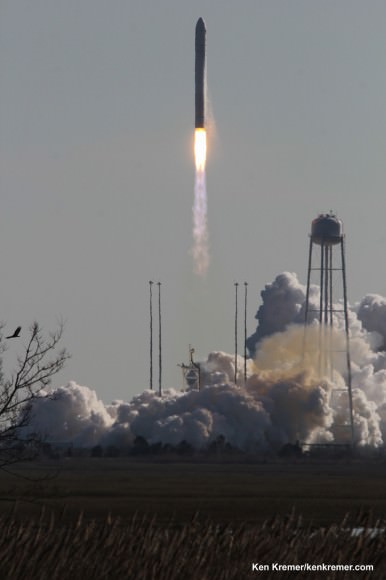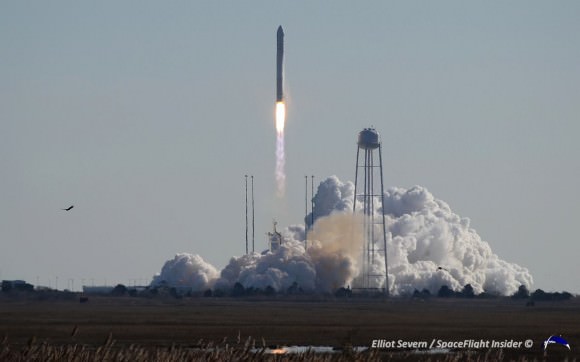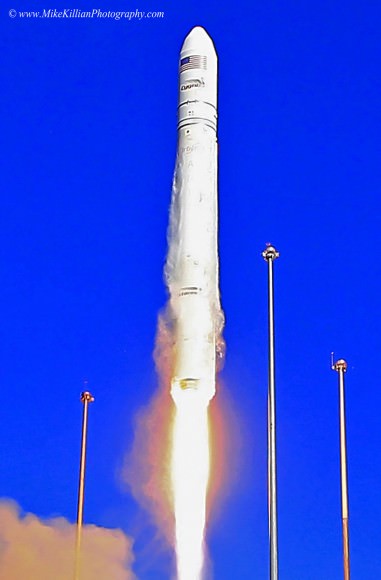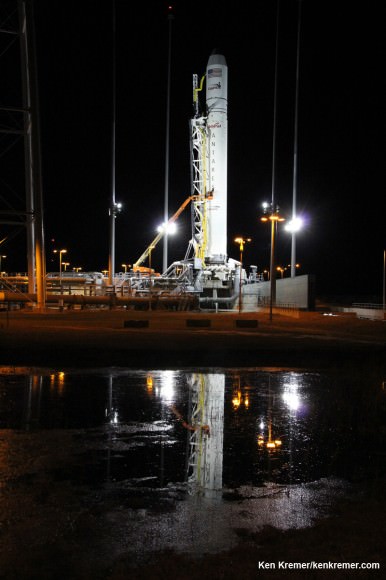Orbital Sciences Corporation Antares rocket and Cygnus spacecraft blasts off on July 13 2014 from Launch Pad 0A at NASA Wallops Flight Facility , VA, on the Orb-2 mission and loaded with over 3000 pounds of science experiments and supplies for the crew aboard the International Space Station. Credit: Ken Kremer – kenkremer.com
Story updated[/caption]
NASA WALLOPS FLIGHT FACILITY, VA – A commercial Antares rocket carrying the private Cygnus cargo freighter thundered aloft from a beachside launch pad in Virginia today, July 13, bound for the space station and packed with a wide range of science experiments and essential supplies for the six person crew.
The flawless blastoff of the Orbital Sciences Corp. Antares rocket occurred precisely as planned today at 12:52 p.m. (EDT) from Pad 0A at the Mid-Atlantic Regional Spaceport on NASA’s Wallops Flight Facility on the Eastern shore of Virginia.
After a 10 minute ascent, Antares placed the Cygnus resupply spacecraft into an initial orbit of 120 x 180 miles (190 x 290 kilometers) above the Earth, inclined at 51.6 degrees to the equator.
“The Antares rocket first and second stages performed flawlessly,” said Frank Culbertson, Orbital’s executive vice president of the advanced programs group, at a post launch briefing at NASA Wallops. Culberston was a NASA shuttle commander and also flew aboard the International Space Station (ISS).
“The solar arrays deployed as planned,” Culbertson reported. The arrays provide Cygnus with life giving power to command and operate the spacecraft.
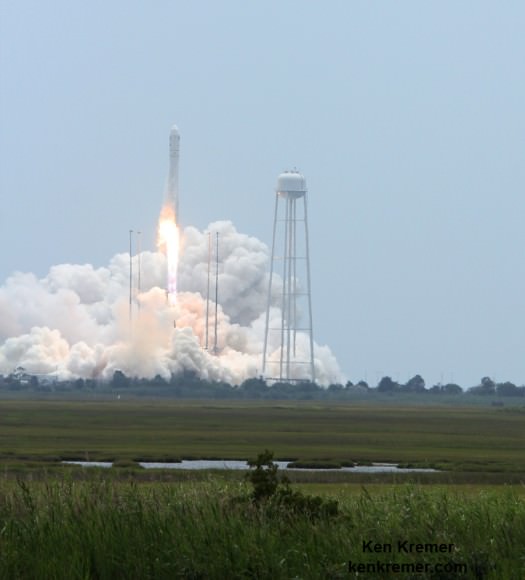
The Orb-2 launch was postponed about a month from June 9 to conduct a thorough re-inspection of the two Russian built and US modified Aerojet AJ26 engines that power the rocket’s first stage after a test failure of a different engine on May 22 at NASA’s Stennis Space Center in Mississippi resulted in extensive damage.
After a nearly three day orbital chase, the Cygnus cargo logistics spacecraft will rendezvous with the ISS on July 16 at approximately 6:39 a.m. (EDT).
ISS Expedition 40 crew members Commander Steve Swanson of NASA and Alexander Gerst of the European Space Agency, will then grapple Cygnus with the stations 57 foot long robotic arm and berth it at the Earth facing port on the Harmony module on July 16 at approximately 6:39 a.m. (EDT).
Today’s liftoff marked the fourth successful launch of the 132 foot tall Antares in the past Antares in the past 15 months, Culbertson noted.
The first Antares was launched from NASA Wallops in April 2013. And the Orb-2 mission also marks the third deployment of Cygnus in less than a year.
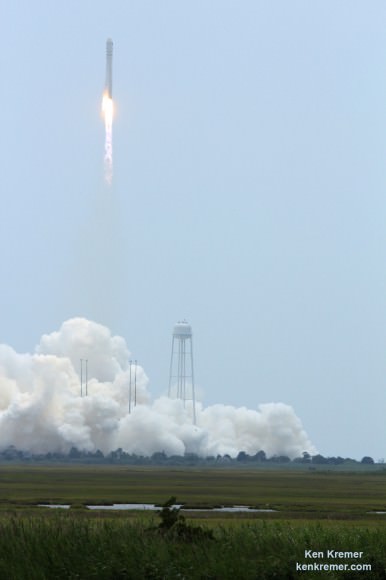
The Antares/Cygnus Orbital-2 (Orb-2) mission is the second of eight cargo resupply missions to the ISS under Orbital’s Commercial Resupply Services (CRS) contract with NASA.
The pressurized Cygnus cargo freighter will deliver 1,657 kg (3653 lbs) of cargo to the ISS Expedition 40 crew including over 700 pounds (300 kg) of science experiments and instruments, crew supplies, food, water, computer equipment, spacewalk tools and student research experiments.
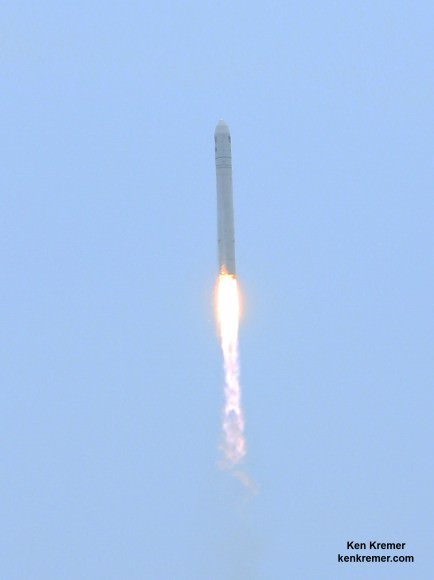
The wide ranging science cargo and experiments includes a flock of nanosatellites and deployers, student science experiments and small cubesat prototypes that may one day fly to Mars.
The Flock 1B group of 28 nanosatellites from Planet Labs of San Francisco are aboard to take pictures of Earth that will be combined into a mosaic view of nearly the entire Earth.
They will be deployed into orbit from the Japanese JEM module.
TechEdSat-4 is a small cubesat built by NASA’s Ames Research Center in California that will investigate technology to return small samples to Earth from the space station. Researchers hope to send a future variant to Mars by 2018 or 2020, the team told Universe Today.
15 student experiments on the “Charlie Brown” mission are aboard and hosted by the Student Spaceflight Experiment Program, an initiative of the National Center for Earth and Space Science Education (NCESSE) and NanoRacks.
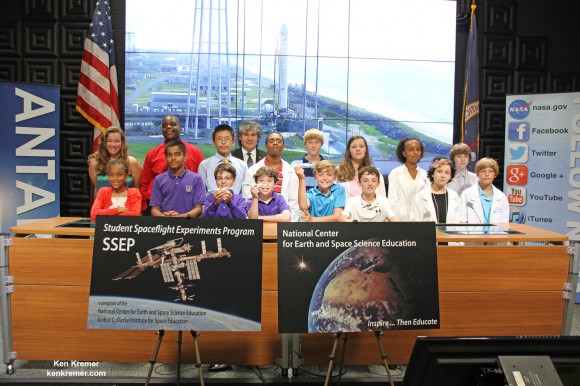
Science experiments from these students representing 15 middle and high schools across America were selected to fly aboard the Orbital Sciences Cygnus Orb-2 spacecraft which launched to the ISS from NASA Wallops, VA, on July 13, 2014, as part of the Student Spaceflight Experiments Program (SSEP). Credit: Ken Kremer – kenkremer.com
They will investigate plant, lettuce, raddish and mold growth and seed germination in zero-G, penecilium growth, corrosion inhibitors, oxidation in space and microencapsulation experiments.
Cygnus will remain attached to the station approximately 30 days until about August 15.
For the destructive and fiery return to Earth, Cygnus will be loaded with approximately 1,340 kg (2950 lbs) of trash for disposal upon atmospheric reentry over the Pacific Ocean approximately five days later.
Orbital Sciences was awarded a $1.9 Billion supply contract by NASA to deliver 20,000 kilograms of research experiments, crew provisions, spare parts and hardware for 8 flight to the ISS through 2016 under the Commercial Resupply Services (CRS) initiative.
The Orb-2 mission launch today marks the second operational Antares/Cygnus flight.
The two stage Antares rocket stands 132 feet tall. It takes about 10 minutes from launch until separation of Cygnus from the Antares vehicle.
SpaceX has a similar resupply contract using their Falcon 9 rocket and Dragon cargo carrier and just completed their 3rd operational mission to the ISS in May.
Watch for Ken’s continuing onsite Antares Orb-2 mission reports from NASA Wallops, VA.
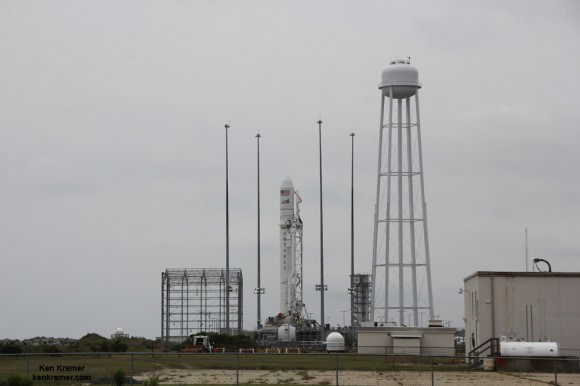
Stay tuned here for Ken’s continuing ISS, OCO-2, GPM, Curiosity, Opportunity, Orion, SpaceX, Boeing, Orbital Sciences, MAVEN, MOM, Mars and more Earth & Planetary science and human spaceflight news.


